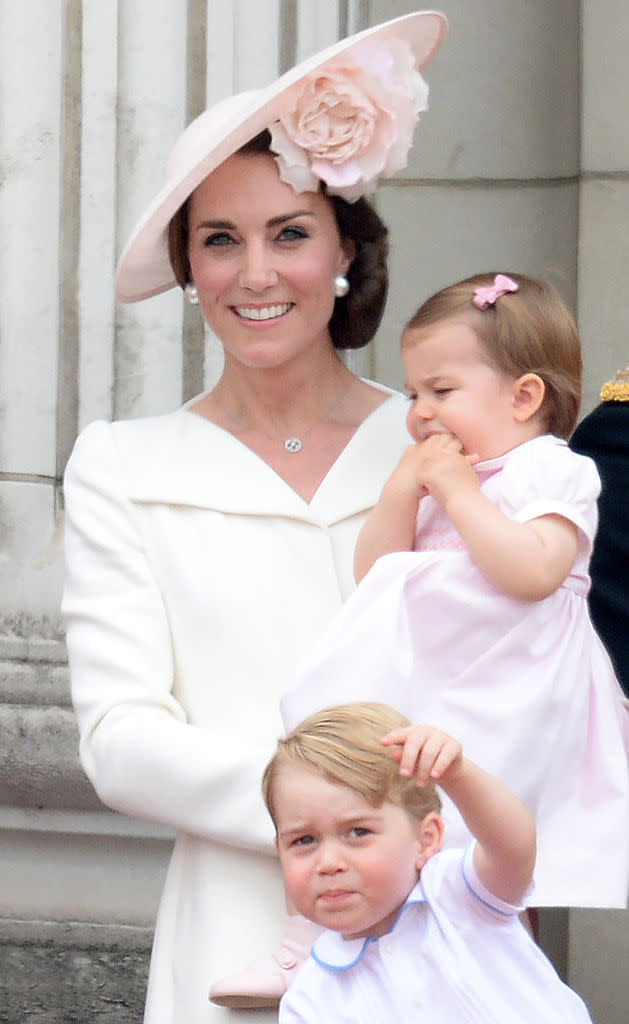Should Toddlers Share Clothes, Just Like Prince George and Princess Charlotte?

Princess Charlotte, 1-year-old daughter of Prince William and Kate Middleton, was recently spotted wearing an outfit that looked identical to the one her big brother, Prince George, wore on the 2-year-old’s first royal tour to Australia back in 2014, according to Viral News: a crimson cardigan over a white top and red-and-white striped shorts.
Not only is it great to see these wealthy and yet down-to-earth royals save their baby clothes as hand-me-downs for their next child (royals — they’re just like us!), the fact that they were so easily able to make the outfit work for both their son and their daughter is an example of the growing acceptance of gender-neutral clothing that works for both boys and girls.

Target announced in August 2015 that the retail giant would ditch gender-based signs in its children’s toys and bedding departments that designated certain items for boys or for girls. Several gender-free clothing lines have also launched in recent years, making it easier for siblings, regardless of gender, to share clothes and for kids to wear what makes them happy, whether that’s a little girl who loves dinosaurs or a little boy who likes the color pink.
Quirkie Kids, which was started by Martine Zoer in March 2014, offers tees that can be worn by both boys and girls. Its Facebook page states: “Some boys like pink and why not? Pink is just a color and so is green, and blue, and yellow. No child should be teased for what they wear. ” Other lines, such as buddingSTEM, co-founded by moms Jennifer Muhm and Malorie Catchpole, offer clothes — primarily for girls, though boys can wear them, too — that feature rocket ships, frogs, and trains on pink, yellow, green, and blue clothing.
After mom Jo Hadley struggled to find clothes for her pink- and purple-loving son, she launched Handsome in Pink in 2007. “We believe that colors (such as pink and purple) and active imagery (such as fire trucks, tool belts, and electric guitars) belong to everyone and should be mingling, not dividing up along gender lines,” according to the website. “The way we see it, there should be more sharing of clothes among girls and boys.”

Courtney Hartman, founder of Jessy and Jack and Free To Be Kids clothing lines, agrees. She started designing kids’ clothes that challenge gender clichés when her son was 2 and her daughter was an infant. “Seeing their clothes side-by-side brought the harmful gender-based messages into sharp relief,” Hartman tells Yahoo Style. “The boys’ section is full of shirts with phrases like ‘Ladies Man,’ ‘Macho Man,’ and ‘Tough Like Daddy,’ while girls get ‘Cute,’ ‘Gorgeous,’ and ‘Sweet Like Mommy.’ Boys get ferocious dinosaurs and tigers, while girls get kittens and flowers. The messages on these clothes matter. We’re telling boys that they are, and should be, aggressive jocks, and we’re telling girls to be pretty sweethearts. It’s very two-dimensional.”
Hartman points out that girls need to know that their worth is based on more than just their appearance, and boys need to know that it’s just as important to be kind as it is to be good at sports. “All kids deserve to have their interests nurtured, whatever those may be,” she says. “There’s no reason boys shouldn’t love butterflies. There’s no reason girls shouldn’t love dinosaurs. Separating the world of childhood into ‘boy stuff’ and ‘girl stuff’ is just silly.”
Follow us on Instagram, Facebook, and Pinterest for nonstop inspiration delivered fresh to your feed, every day.

